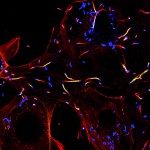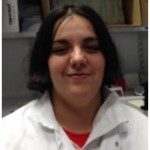Présentation
In this project we propose to combine ultrahigh-throughput screening of primary B cells using droplet based microfluidics with next-generation sequencing to profile entire B cell antibody repertoires. This process will enable highly-efficient and rapid characterisation of antigen-specific B cells and establish an “anatomical map” of their distribution. We will couple droplet-based microfluidic screening based on antigen binding to a novel next-generation sequencing approach based on microfluidic DNA barcoding to retrieve the antibody sequences from each B cell specifically, whilst maintaining the information about the pairing of the heavy chain and light chain variable regions (VH and VL) and associating it with the affinity of each antibody for the antigen. We believe the combination of these two techniques will constitute a powerful tool for the screening of non-immortalized B cells and allow unprecedented deep-mining of antibody repertoires (since millions of B cells can be screened and sequenced per day) with multiple applications, including (i) fundamental research into idiopathic disease, (ii) diagnosis/prognosis of idiopathic disease (iii) vaccination and (iv) discovery of therapeutic antibodies. Applying this technology, we should be able to characterize the antibody repertoire in detail (the ‘antibodyome’) and generate an anatomical map of antibody response with respect to antigen nature, immunization route and B cell clone dissemination. This will be achieved via immunizations of mice by various routes as well as with a preclinical autoimmune model. Finally, we propose to demonstrate the pathogenic nature of antibodies in a given human pathological condition (allergic shock) as a proof of concept for establishing diagnostic screens in idiopathic diseases to which specific antibodies could be triggers or effectors.
Consortium: Antibodies in Therapy & Pathology, Institut Pasteur; Dr Pierre Bruhns (coordinator) Biochemistry Laboratory, ESPCI-ParisTech; Pr Andrew Griffiths HiFiBiO SAS, ESPCI-ParisTech; Dr Allan Jensen Antibody engineering platform (PFIA), Institut Pasteur; Dr Pierre Lafaye




